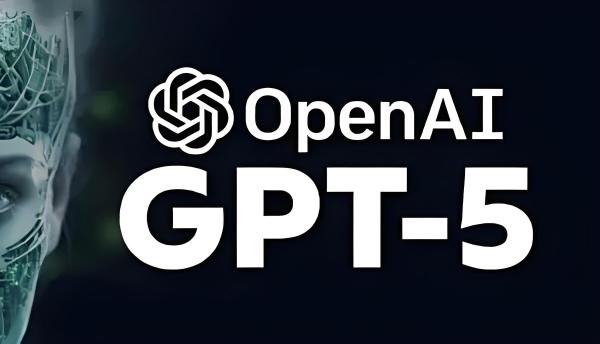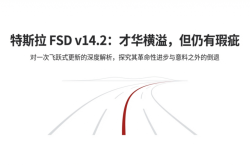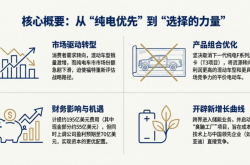GPT-5: The Gear of Industry Transformation Begins to Turn
![]() 08/14 2025
08/14 2025
![]() 442
442

When OpenAI's GPT-5 burst onto the digital scene like a beacon, heralding new benchmarks in programming, mathematics, writing, health, visual perception, and beyond, the world took notice.
Sam Altman positioned it as "the world's best model" and described it as a "significant step" towards Artificial General Intelligence (AGI).
Amidst this technological leap, we need a rational perspective that rises above the noise—neither blindly embracing nor easily dismissing, but situating it within the grand tapestry of human civilization's evolution for a profound and constructive examination.
Technological evolution follows an inherent pattern of continuity and breakthrough intertwined. From GPT-3.5 to GPT-4, and now GPT-5, it is not a magical leap but a qualitative transformation built upon countless parameter optimizations, architectural iterations, and algorithmic refinements.
GPT-5's vaunted "unified system architecture" integrates efficient base models, deep reasoning modules, and real-time routing systems, marking a substantial maturation of the AI engineering paradigm.
This architectural design allows it to dynamically assess task nature, intelligently toggling between "quick response" and "deep expert-level thinking," vastly elevating the upper limits of human-machine collaboration efficiency.
Particularly noteworthy are its substantial advancements in mitigating "hallucinations" (erroneous generations), enhancing instruction execution accuracy, and reducing the tendency towards "flattery"—not mere embellishments but addressing core challenges for AI practicality and credibility.
Each layer of "irrationality" peeled away is a tangible step towards AI becoming a dependable tool.
However, true optimism acknowledges boundaries. OpenAI spokespersons clearly pointed out GPT-5's key limitations in areas such as "persistent memory, autonomy, and cross-task adaptability."
NBC and TechCrunch reports also note that its advantages may be more "incremental" than "disruptive," and whether it surpasses other top models remains to be seen. This honesty is commendable.
It reveals a profound truth: current AI's "intelligence" remains highly contextualized and task-specific, a "narrow domain expert," with a profound gap from "general intelligence" that possesses coherent self-awareness and a true understanding of the world's causal laws.
GPT-5's excellence lies within the track and rules meticulously set by humans. It serves as a reminder that the path to AGI is fraught with complex cognitive challenges.
To view GPT-5's arrival merely as a tool upgrade greatly underestimates its potential to catalyze profound social transformation.
Its deep capabilities in health herald a more inclusive and immediate era of primary medical consultation and health management. Its strides in programming and mathematics redefine the productivity boundaries and collaboration modes of knowledge workers. Its breakthroughs in visual perception will significantly accelerate intelligent integration from industrial quality inspection to creative design.
Particularly important is its cornerstone strategy of "free openness" (despite subscription tiers), which significantly lowers the threshold for accessing cutting-edge AI capabilities, potentially catalyzing numerous grassroots innovations and long-tail applications, allowing the technology dividend to permeate more broadly.
However, the flip side of technological empowerment is always the rebalancing of power and responsibilities.
When GPT-5 provides "expert-level answers" in health consultations, how are its implicit ethical responsibilities defined? When it deeply intervenes in legal documents or financial analysis, are the transparency and explainability mechanisms sufficiently robust? Will its powerful generative capabilities exacerbate information pollution or cognitive manipulation in more subtle ways?
OpenAI's proactive revelation of its limitations is precisely the starting point for responsible innovation.
This necessitates a forward-looking and adaptive regulatory framework, developers embedding Ethics by Design at the core of systems, and society at large enhancing digital literacy to cultivate a critical eye for AI outputs—humans must always be the ultimate arbiters of value and responsibility.
The birth of GPT-5 is a mirror reflecting humanity's cognitive territories and civilizational aspirations.
Its advancements in mathematics and logic echo humanity's relentless pursuit of rational order. Its efforts to reduce "flattery" imply a desire to return to the authenticity of sincere communication. Its breakthroughs in multimodal understanding reflect the essence of sensory coordination in human cognition of the world. Its persistent pursuit of "persistent memory" and "cross-task adaptability" mirrors the unique depth of the human mind in contextual association, experience accumulation, and transfer learning.
Rather than saying GPT-5 imitates humans, it challenges humans to re-recognize the wonder and complexity of their own intelligence, prompting us to ask: What is true understanding? What is meaningful creation? What is the foundation of value?
Standing at the new threshold opened by GPT-5, we need a spirit of "rational optimism."
Rationality lies in clearly recognizing its capability boundaries and potential risks, avoiding the myths of technological omnipotence or threat. Optimism stems from the belief that, with wisdom and collaboration, humanity can harness the power of tools and transform them into a stepping stone for civilization's leap.
OpenAI's balance between technological breakthroughs and honest acknowledgment of limitations is commendable.
This inspires us that the exploration of AGI should always adhere to the principle of "responsible innovation": while pursuing performance limits, placing equal emphasis on safety, transparency, fairness, and controllability; while embracing commercial prospects, remaining true to the original intent of technological inclusivity.
GPT-5 is not the endpoint of AGI, nor even a clear outline of it.
It is akin to the Wright brothers' maiden flight—an exciting, directional validation.
Its true value lies not only in the capabilities it showcases today but in the new horizons it opens for humanity to explore the essence of intelligence, the new tools it provides to address complex global challenges, and the profound conversations it inspires about technology, ethics, and the future of humanity.
The path to AGI is destined to be long and arduous, but every solid step forward deserves to be illuminated by the light of rationality and guided by constructive wisdom. Because ultimately, it is not the tools themselves that shape the future but the meaning humans give to them and the wisdom with which they wield them.






